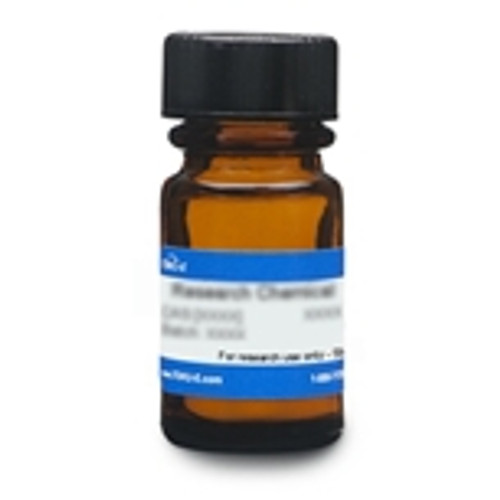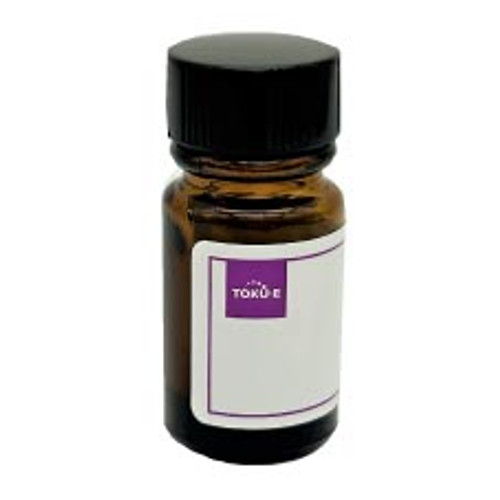Cefuroxime Sodium is a broad-spectrum, semi-synthetic second-generation cephalosporin antibiotic with increased stability to β-lactamases. It is bactericidal against Gram-negative and Gram-positive bacteria. Cefuroxime Sodium is freely soluble in aqueous solution.
| Mechanism of Action | Like β-lactams, cephalosporins interfere with PBP (penicillin binding protein) activity involved in the final phase of peptidoglycan synthesis. PBP’s are enzymes which catalyze a pentaglycine crosslink between alanine and lysine residues providing additional strength to the cell wall. Without a pentaglycine crosslink, the integrity of the cell wall is severely compromised and ultimately leads to cell lysis and death. Resistance to cephalosporins is commonly due to cells containing plasmid encoded β-lactamases. Like many second generation cephalosporins, Cefuroxime is relatively stable in the presence of β-lactamases. |
| Spectrum | Cefuroxime Sodium is a broad-spectrum antibiotic targeting a wide variety of Gram-negative and Gram-positive bacteria. |
| Impurity Profile | Individual Impurity: Not more than 1.0% Total Impurities: Not more than 3.0% |
| Microbiology Applications | Cefuroxime Sodium is commonly used in clinical in vitro microbiological antimicrobial susceptibility tests (panels, discs, and MIC strips) against Gram-positive and Gram-negative microbial isolates. Medical microbiologists use AST results to recommend antibiotic treatment options. Representative MIC values include:
|
| Eukaryotic Cell Culture Applications | Rat erythrocyte glucose-6-phosphate dehydrogenase was found to increase in activity in response to Cefuroxime exposure in vitro (Temel Y et al, 2018). Cell proliferation, cytotoxicity, cell metabolism, and extracellular matrix calcification were assessed after antibiotic treatment. Cefuroxime had no inhibiting effects on osteoblasts with lower concentrations (25-100 ug/ml), but higher concentrations (250-1000 µg/ml) saw an increase in cell proliferation and cytotoxicity, and an inhibition of cell metabolism (Salzmann et al, 2007). |
| Molecular Formula | C16H15N4NaO8S |
| References | Georgopapadakou NH (1992) Mechanisms of action of cephalosporin 3'-quinolone esters, carbamates, and tertiary amines in Escherichia coli. Antimicrob. Agents Chemother. 37(3): 559-565 O'Callaghan CH, Sykes RB, Griffiths A, Thornton JE (1976) Cefuroxime, a new cephalosporin antibiotic: Activity in vitro. Antimicrob. Agents Chemother. 9(3):511-519 PMID 1259407 Salzmann GM (2007) Effects of Cefuroxime on human osteoblasts in vitro. J. Biomed. Mat. Res. 82A(2):462-468 Temel Y, Ayna A, Shafeeq IH and Ciftci M (2018) In vitro effects of some antibiotics on glucose-6-phosphate dehydrogenase from rat (Rattus norvegicus) erythrocyte. Drug Chem. Toxicol. ePub. doi: 10.1080/01480545 PMID 29947262 |
| MIC | Bacteroides bivius| 0.5 - >64|| Bacteroides disiens| 0.5 - >64|| Bacteroides distasonis| 0.5 - >64|| Bacteroides fragilis| 0.5 - >400|| Bacteroides melaninogenicus| 1.6|| Bacteroides ovatus| 0.5 - >64|| Bacteroides thetaiotaomicron| 0.5 - >64|| Bacteroides vulgatus| 0.5 - >64|| Borrelia afzelii | 0.125 - 0.25|| Borrelia bissettii| 0.125|| Borrelia burgdorferi| 0.06 - 0.5|| Borrelia garinii | 0.06 - 0.125|| Borrelia valaisiana (VS116)| 0.25|| Branhamella catarrhalis| 0.25 - 2|| Brucella abortus| 4|| Brucella melitensis| 4|| Brucella suis| 4|| Burkholderia mallei (Pakistan)| 64 - 128|| Citrobacter| 1.6 - 400|| Citrobacter diversus| 2 - >32|| Citrobacter freundii| 1 - >128|| Citrobacter koseri| ≤0.25 - 8|| Clostridium| 0.4 - 1.6|| Clostridium difficile| 64 - >64|| Clostridium histolyticum | 0.5 - 4|| Clostridium perfringens| 0.5 - 4|| Clostridium sordellii| 0.5 - 4|| Clostridium sporogenes| 0.5 - 4|| Edwardsiella hoshinae | ≤0.03 - 0.06|| Edwardsiella ictaluri | ≤0.03 - 0.25|| Edwardsiella tarda| ≤0.03 - 4|| Eikenella corrodens| 0.5 - 8|| Enterobacter| 0.8 - ≥400|| Enterobacter aerogenes| 2 - 256|| Enterobacter agglomerans| ≤0.25 - 16|| Enterobacter cloacae| 2 - >64|| Enterobacter sakazakii| ≤0.25 - 16|| Enterobacter spp.| 1 - ≥128|| Enterobacteriaceae| 0.03 - 128|| Enterococci| 2 - 128|| Enterococcus faecalis| 8 - >128|| Enterococcus faecium| >64|| Enterococcus liquefaciens | >64|| Enterococcus spp.| ≥32|| Escherichia coli| 0.12 - 1024|| Fusobacterium| 1.6|| Fusobacterium| 1.6|| Haemolytic streptococci| 0.008 - 0.12|| Haemophilus influenzae| ≤0.06 - 32|| Haemophilus parainfluenzae| 0.13 - 1|| Haemophilus spp.| 0.25 - 16|| Hafnia alvei| 2 - 16|| Helicobacter pylori| 0.008 - 8|| Klebsiella| 0.8 - 6.2|| Klebsiella oxytoca| 1 - 8|| Klebsiella pneumonia| ≤0.25 - 512|| Klebsiella spp.| ≤0.12 - >128|| Listeria | 0.4|| Listeria innocua| 1 - >64|| Listeria ivanovii| 1 - >64|| Listeria monocytogenes| 1 - >64|| Listeria seeligeri| 1 - >64|| Listeria welshimeri| 1 - >64|| Moraxella catarrhalis| ≤0.06 - 8|| Morganella morganii| 0.12 - 256|| Morganella spp.| 1 - >128|| Neisseria gonorrhoeae| 0.002 - 2|| Neisseria meningitidis| ≤0.2 - 0.8|| Neisseria spp.| 0.008 - 1|| Ochrobactrum anthropi (SLO74)| ≥128|| Pasturella multocida | 0.4 - 0.8|| Pneumococci| 0.015 - 8|| Proteus| 12.5 - 85|| Proteus mirabilis| 0.25 - 512|| Proteus morganii| 6.2 - 400|| Proteus rettgeri| 0.4 - >400|| Proteus spp. (indole-positive)| 0.25 - >128|| Proteus vulgaris| 1 - 1024|| Providencia| 1.6 - 400|| Providencia rettgeri| 0.12 -64|| Providencia spp.| 0.06 ->128|| Providencia stuartii| 0.5 - >32|| Pseudomonas| >400|| Pseudomonas aeruginosa| >32 - 1024|| Pseudomonas cepacia| 8 - >64|| Pseudomonas flourescens| 8 - >64|| Pseudomonas putida| 8 - >64|| Pseudomonas spp.| 16 - 210|| Pseudomonas stutzeri| 8 - >64|| Ralstonia pickettii| 0.5|| Salmonella| 3.1 - 12.5|| Salmonella Agona| 0.5 - 4|| Salmonella Brandenburg| 0.5 - 4|| Salmonella enteritidis| 0.5 - 8|| Salmonella spp.| ≤0.25 - 8|| Salmonella typhimurium| 0.5 - 4|| Serratia| 3.1 - >400|| Serratia liquefaciens| 16 - >64|| Serratia marcescens| 1 - 512|| Serratia spp.| 1 - >128|| Shigella| 0.4 - 50|| Shigella boydii| 2 - 4|| Shigella dysenteriae (6 + ESBL + multidrug-resistant)| 1024|| Shigella flexneri| 1 - 64|| Shigella sonnei| 1 - 256|| Shigella spp.| 2 - 8|| Staphylococci| 0.25 - 64|| Staphylococcus aureus| 0.25 - >128|| Staphylococcus cohnii| 0.5 - 4|| Staphylococcus epidermidis| ≤0.12 - >32|| Staphylococcus haemolyticus (methicillin-resistant)| 0.5 - >64|| Staphylococcus hominis| 0.25 - 1|| Staphylococcus saprophyticus| 0.25 - >128|| Staphylococcus simulans| 0.25 - 1|| Staphylococcus spp. (coagulase-negative)| ≤0.12 - >32|| Staphylococcus warneri| 0.25 - 0.5|| Stenotrophomonas maltophilia| 32|| Streptococci| ≤0.004 - 64|| Streptococcus agalactiae| 0.06 - 0.4|| Streptococcus bovis| ≤0.2|| Streptococcus faecalis| 6.2 - 25|| Streptococcus milleri | 0.03 - 0.5|| Streptococcus mitior| 0.03 - 0.13|| Streptococcus pneumonia| 0.004 - >16|| Streptococcus pyogenes| 0.008 - 0.5|| Streptococcus viridans| ≤0.2|| Xanthomonas maltophilia| 2 - >64|| Yersinia enterocolitica| 1 - 8|| |








